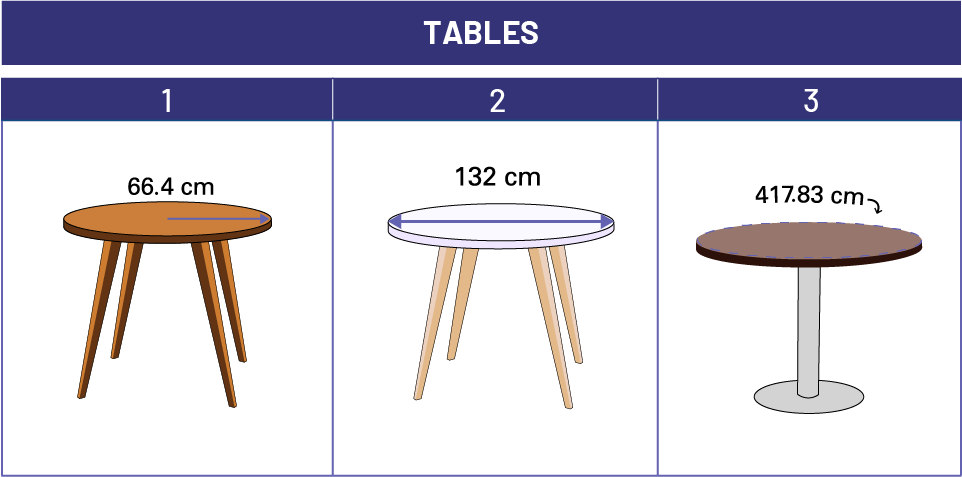E2.3 Use the relationships between the radius, diameter, and circumference of a circle to explain the formula for finding the circumference and to solve related problems.
Activity 1: Discovering the Formula for the Circumference of a Circle
- Choose a circular object, for example, a plate, a mirror, a flying disc (Frisbee).
- Cut the string to the length of the diameter of the circular object.
- Measure the length of the string to determine the diameter of the object.
- Use the piece of string to measure the outline of the object. If necessary, use the masking tape to hold it in place.
- How many times did you move the piece of string? Estimate the circumference of the circular object.
- Write the data obtained in a table.
- Look at the data in the table.
- What do you notice?
- Can you determine the regularity?
- Approximately how many times did you use the string to go around the circular object?
- Would it be the same regularity to go around a cup, a stool or a lid?
- Try to determine as accurately as possible how many times you use the diameter measurement (the string) to measure the circumference.
- Were you able to go around the object by iterating the string three times?
- Using a fraction, express the missing length you would need to go around the object.
- Determine the fraction that represents the length of the piece of string used to make the last measurement of the circumference of the circular object.
- What formula would allow you to calculate the circumference of a circular object? Clearly define the variables in your formula.
Source: translated from Activités d'apprentissage, CFORP, 6e année.
Activity 2: Solving a Circumference Problem
I want to buy a round table for my kitchen. Here are the measurements of the ones I am interested in. Which one has the biggest table top? Use a chart to compare the measurements. You can use your calculator to help you.

Source: translated from En avant, les maths!, 7e année, ML, Sens de l’espace, p. 8-9.
